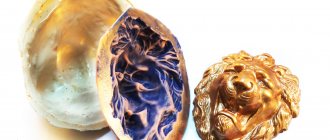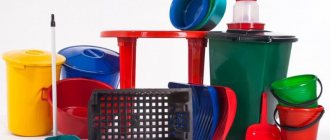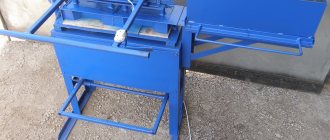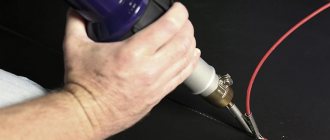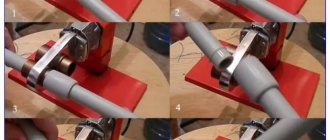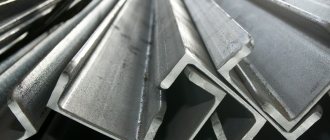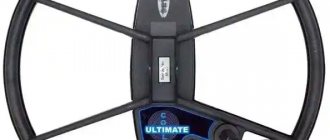In this article we will talk about the main technologies for manufacturing plastic products and help you choose the most suitable method for your purposes.
Today, the technology for producing plastic products is available not only to large industrial companies with huge circulations, but also to ordinary people, inventors and businessmen. Production technologies make it possible to create plastic parts or housings for any product in any quantity, which opens up new avenues for invention, creativity or business. For example, in the last article we wrote about the production of housings for quadcopters as a ready-made business idea, which almost no one is doing in Ukraine.
There are three technologies for manufacturing plastic products. All of these technologies make it possible to create high-quality plastic products, but they have some differences . Let us consider in detail each of the technologies, its advantages, disadvantages and areas of application. Our article will help you choose a technology for the production of plastic products specifically for your case.
The production of a plastic case is preceded by the creation of a 3 D model . more about the instrument housing modeling here.
Technology for the production of plastic products using 3D printing
Today, 3D printing technology has gained incredible popularity not only in the world, but also in Ukraine. Using a 3D printer, you can relatively quickly obtain a finished product and use it as a prototype, for an exhibition or presentation, or in scientific activities when modeling various processes. Printed products allow you to fully evaluate the functionality of the future plastic case without significant costs for launching multi-batch production. From this point of view, the technology for producing plastic products using 3D printing is an indispensable tool for assessing the profitability of a product. In addition, at this stage you can easily notice flaws or shortcomings in the functionality of the item and remake the 3D model.
The most common 3D printing method is FDM technology . This method is used in almost all areas of production. Printing is carried out layer by layer by entering the material (polymer filament) into the dispenser nozzle. FDM technology is limited by the size of the printer, but it is possible to create several parts of a product and then glue them together. When using this technology, it is necessary to create special supports if the product has large angles of inclination. After printing, these supports are removed. In addition, SLS (laser sintering of powder) and SLA (laser sintering of liquid photopolymer) technologies are widely used. Depending on the materials used, it is possible to obtain a housing from different types of plastic of any color.
Contact KLONA for 3D printing services . We will help you choose the most suitable 3D printing method, choose the material that is suitable for your product, and the equipment to implement your project.
3D printing refers to the piece production of plastic products, as it is an ideal option for producing cases or parts in small runs (up to 20 pieces).
Advantages of manufacturing products using 3D printing
- There are no preparatory steps : immediately after receiving the 3D model, it can be sent to the printer for printing.
- A very simple method that does not require additional equipment.
- Allows you to achieve fairly high accuracy of the product , which depends on the printer used.
- A large selection of materials and printing methods allows you to implement any project.
Disadvantages of 3D printing technology
- low productivity : printing one product can take several hours, when in other methods of manufacturing plastic cases it can take several seconds;
- limited dimensions of the resulting products : if the body is very large and must be solid, then 3D printing may not be suitable for such a request due to the limited size of the printer.
When creating plastic cases, the development of the industrial design of the product is very important. Industrial designers at KLONA create the most convenient and functional enclosures in terms of production technology and ease of use. Recommendations for case design can be found here.
Welding of plastics
Thermoplastics of all types lend themselves well to welding. Highly elastic plastics (polyolefins, polyamides, polymethyl methacrylates) are welded by resistance welding without the use of filler material. Thin sheets and films are overlap welded by passing the films between rollers heated by electric current. Plates, bars and other similar products are butt welded. The surfaces to be welded are compressed under a pressure of 0.1-0.3 MPa; the joint is heated with high frequency currents or ultrasound. The strength of the welded joint is close to the strength of the material itself.
Plastics with less plasticity (vinyl plastics, fluoroplastic) are welded using a filler rod made from the same material as the parts being welded, but with the addition of a plasticizer. The edges to be joined are cut to form a weld pool. Welding is performed with a jet of hot air. The strength of the weld is 70-80% of the strength of the material itself.
Methods for welding thermosetting and hardening plastics, as well as fiberglass, have also been developed.
Plastics are well bonded using adhesives, which are a solution of a given polymer in an appropriate solvent. Some adhesives (polyvinyl acetate, phenol-neoprene, based on modified epoxides, etc.) have wide versatility in relation to the materials being glued. These adhesives can be used to bond plastics to metal, glass, ceramics, etc.
Technology for the production of plastic products: casting in silicone molds
This method refers to small-scale production and is best suited for the production of a small batch of products (from 20 to 1000 pieces).
To make silicone molds, you need a master model - a prototype of the future product. As a master model, you can use a ready-made plastic case or one printed on a 3D printer.
After receiving the master model, you can begin making a reverse silicone mold . Using adhesive tape, the parting lines of the mold are marked and the holes are closed. A gating system for supplying silicone is placed inside and formwork is installed. This technology for the production of a plastic product consists of pouring high-quality degassed silicone into a formwork within which the prototype is located. After this, the silicone hardens and the mold can be used for mass production. The process of making a silicone mold takes about a day.
The heated plastic is poured into a silicone mold, where a vacuum environment ensures the removal of gas and air bubbles that form when the plastic is mixed with the solvent. After the plastic has hardened, the mold is ready for the next casting. It is possible to significantly increase productivity by using several silicone molds simultaneously.
Advantages of the silicone molding method
- Silicone perfectly follows the shape of the master model, which allows you to achieve high accuracy .
- The method is characterized by a relatively low cost for small runs.
Disadvantages of using silicone molds
- using one silicone mold you can get up to 20 finished products , depending on its durability;
- limited dimensions of the resulting products: silicone molds are used to produce small and medium-sized parts (up to 30-40 cm);
- low production speed (plastic hardening can take several hours, which allows you to produce only 5-10 products from one mold per day);
- limited design - the minimum thickness of plastic products should be 0.1 mm.
Molding of fiberglass plastics
Small-sized fiberglass products are produced by hot pressing in metal molds. This method is not applicable for the manufacture of large-sized products, since it requires powerful pressing equipment and the production of expensive and bulky molds.
Large-sized shell structures are most often made by spraying plastic into a viscous-flowing state along with glass fiber onto the model. Plastic and chopped fiber are fed in the required proportion into the sprayer. The stream emerging from the sprayer is applied to the model until a layer of the required thickness is formed.
Positive models, which reproduce the internal contour of the product, are used in cases where it is necessary to obtain a smooth and precise internal surface. Negative models, which reproduce the outer contour of the product, are used to obtain a clean and accurate outer surface.
When making products from cold-curing plastics, models are made from wood, gypsum, cement, and also from thermosetting plastics. During hot curing, metal heated models are used. The surface of the layer applied to the model is compacted by rolling with rollers or crimping with compressed air through an elastic cover made of heat-resistant rubber or elastic silicone plastic. After curing, the surface of the product is cleaned, primed and coated with finishing synthetic varnish.
The dimensional accuracy of products produced by the spraying method is low. For large parts, the difference in size can reach several millimeters. The strength of such products is inferior to the strength of products pressed under high pressure.
To manufacture hollow parts in the shape of bodies of rotation (pipes, cones, etc.), the method of winding continuous strands of glass fiber impregnated with synthetic on a rotating mandrel is used. The spinner feeder is mounted on a support that performs a reciprocating movement relative to the mandrel. Winding is usually done crosswise in several layers. The wound layers are compacted with rollers.
When producing high-strength boards with oriented fiber, winding is done on a large-diameter drum, the still unhardened winding is cut along the generatrix, straightened and pressed in flat or shaped dies.
Technology for the production of plastic products using plastic injection molding
This method is suitable for large-scale production (from 1000 parts) of plastic cases. When molding plastic under pressure, it is possible to obtain products of complex configurations from different materials (polymers, metal, etc.). The technology consists of casting heated material under pressure into molds.
A mold is a device that accurately replicates the design of the future product. High pressure is necessary to ensure that the plastic or metal fills all the small holes and recesses in the mold. An integral stage of mold manufacturing is mold design. This is much more difficult than creating a silicone mold.
the service of designing a mold for your product from KLONA. Our modelers are skilled in designing molds for complex housing configurations. Read more about the service here.
Molds are made of high-quality metal based on a 3D model. They are characterized by high durability, strength and precision. Molds are used in all types of industry to produce plastic, metal and other injection molded products.
Advantages of injection molding production
- Low cost of products for large quantities.
- There are no restrictions on the configuration of plastic products.
- Identity of all products and low percentage of defective products.
- Durability of molds (KLONA company provides a guarantee on molds for the entire period of cooperation).
- One mold can produce an unlimited number of products (any worn part can be replaced with a new one). In addition, there are multiple molds that allow you to produce dozens of products at a time (for example, pen caps).
- High productivity : the formation and cooling of one case occurs in less than one minute (depending on the configuration, it can be from 5 seconds). Read more about the types of molds here.
Disadvantages of mass production technology in the manufacture of molds
- the mold design process can take several weeks , which significantly delays the start of production;
- production and design of a mold even for a small plastic case will require large costs at the start of production .
Extrusion
Extrusion molding is used for the production of rods, pipes, hoses, plates, films, and shaped profiles (handrails, baseboards, etc.) from thermoplastics. The process is carried out on continuous screw presses (extruders). The casting mass is fed through the loading hopper into a heated screw cylinder, picked up by the turns of the screw (which in turn is heated) and moves along the cylinder, undergoing mixing and compaction. Compaction of the mass is achieved by reducing the pitch or height of the auger turns. A die with a hole corresponding to the cross-sectional shape of the product is installed at the outlet end of the cylinder. The molded product, emerging as a continuous strand from the die, is cooled. After hardening, it is cut into pieces of the required length.
Recently, heat resulting from friction of the mass against the cylinder walls and screw turns (“adiabatic extrusion”) has been used to heat the casting mass. This method simplifies the design of the press and increases the efficiency of the process.
The extrusion method is widely used for applying insulating sheaths to conductors, cables, etc. The conductors to be coated are fed from the coil through the central hole in the screw and are enveloped in the molding mass in the die.
To produce films, an angular head is installed at the output end of the press. The workpiece leaves the die in the form of a thin-walled pipe, is rotated at an angle of 90°, inflated with compressed air until the walls of the required thickness are obtained, and enters a wedge-shaped gap between two endless belts, where it is flattened. The resulting double tape is fed by exhaust rollers for cutting.
From pipes obtained by extrusion, hollow products (flasks, bottles, flasks, etc.) are made (by blowing in molds). The bottom of the products is welded.
What are plastics made of?
The raw materials for the vast majority of plastics are coal, natural gas and oil. From them, simple (low molecular weight) gaseous substances are isolated through chemical reactions - ethylene, benzene, phenol, acetylene, etc., which are then converted into synthetic polymers during polymerization, polycondensation and polyaddition reactions. The excellent properties of polymers are explained by the presence of high molecular weight bonds with a large number of initial (primary) molecules.
Some stages of polymer production are complex and extremely environmentally hazardous processes, so the production of plastics becomes accessible only at a high technological level. At the same time, the final products, i.e. Plastics are generally completely neutral and do not have any negative impact on human health.
Technological processes for the production of polymeric materials and plastics
Polymers are products of chemical combinations of identical molecules in the form of repeatedly repeating units.
Polymer molecules consist of tens and hundreds of thousands of atoms. Polymers include: cellulose, rubbers, plastics, chemical fibers, varnishes, adhesives, films, various resins , etc.
Based on their origin, polymer materials are divided into natural and synthetic . Natural ones include: starch, rosin, proteins, natural rubber, etc. The bulk of polymer materials used in modern industry are synthetic polymers. They are produced using polymerization reactions (without the formation of by-products), for example the production of polyethylene, and polycondensation (with the formation of by-products), for example the production of phenol-formaldehyde resins.
The production of polymers by polymerization reaction is carried out as follows. Organic substances containing double bonds in the molecule enter into the polymerization reaction. Under the influence of light, heat, pressure, or in the presence of catalysts, molecules of substances are connected to each other by opening double bonds, forming a polymer.
When polymers are produced by polycondensation, two monomer products react to form a polymer and a by-product.
Among polymeric materials, plastics occupy a special place. This is a material that contains high molecular weight synthetic resins as its main component. They are obtained by chemical synthesis of the simplest substances extracted from such accessible raw materials as coal, lime, air, and oil.
The main advantage of using plastics compared to other materials is the ease of processing them into a product. Their inherent plastic properties make it possible, using automatic presses, casting machines, etc., to produce hundreds of parts of complex configurations per hour. At the same time, the consumption of materials is minimal (virtually no waste), the number of machines and operating personnel is reduced, and energy consumption is reduced. In view of this, significantly less capital investment is required in organizing the production of plastic products.
Methods for processing plastics and making plastic products depend on the relationship of plastics to temperature. There are thermoplastic and thermosetting plastics .
Thermosetting plastics include plastics that, when heated to a certain temperature, soften and then become irreversibly infusible and insoluble. Thermoset plastics, once cured, cannot be recycled and are therefore called irreversible. An example of thermoset plastics are phenolics. Products made from thermosetting plastic are produced by pressing in molds. The latter have an internal cavity corresponding to the shape and size of the future product, and usually consist of two detachable parts - a matrix and a punch. The matrix is fixed on the bottom plate of the press, the punch is mounted on the movable slide of the press. A measured amount of press powder, heated to 90–120 °C, is fed into a matrix at the temperature required for pressing. Under the influence of heat from the heated matrix, the polymer softens and acquires the necessary plasticity. Under the action of the punch, the softened material fills the mold cavity. At the same time, complex chemical transformations occur in the thermosetting resin, leading to the formation of an infusible material. Hardening of the product occurs in a mold under pressure. After a certain period of time, the product is removed from the mold. Temperature, pressure and pressing time are determined by the properties of the materials being pressed. In addition, the extrusion method or extrusion is also used for processing thermosetting plastics. This method produces products of flat (sheets, films) or cylindrical (rods, pipes) shapes.
To produce thermoplastic plastic products, the following methods are used: injection molding, extrusion (squeezing out) and sheet molding
. Their use is due to the thermoplasticity of the material.
The most applicable method for processing thermoplastic plastics is injection molding. Performed on special injection molding machines. Powdered or granular polymer is fed into a heated cylinder of an injection molding machine, where it is melted. When cooled, the thermoplastic polymer hardens and takes on the appearance of a part.
Also, when processing plastics into products, molding, stamping, machining by cutting, and blowing of hollow products are used. All methods are characterized by a short technological cycle, low labor costs and ease of automation.
Synthetic fibers are obtained from synthetic high molecular weight resins. A large group consists of polyamide fibers - nylon, nylon. They are characterized by high strength, elasticity, resistance to alkali, and electrical insulation resistance. Dacron belongs to the group of polyester fibers. It is used for the production of fabrics, knitwear, and electrical insulating materials. It has high mechanical strength.
The technological process for producing chemical fibers includes the following stages:
1) preparation of spinning mass;
2) fiber spinning;
Finishing.
Rubber is a typical representative of high-molecular (polymer) compounds. It is the main component of rubber and can be of plant origin (natural) or synthetic. Synthetic rubber is most widely used in industry. Its chemical composition and structure, as well as physical properties, can be very diverse and differ greatly from the properties of natural rubber, which is the advantage of synthetic rubbers.
The main raw materials for the production of synthetic rubbers are associated gases from oil refining, ethyl alcohol and acetylene. The main methods of production are polymerization and polycondensation. When processed, rubbers are converted into rubber. It is characterized by high elasticity, resistance to abrasion, bending, gas and water resistance, high electrical insulating properties, and resistance to aggressive environments.
Rubber is produced by adding a number of components (ingredients) to rubber. This mixture is then vulcanized. Vulcanization involves the formation of bridges between linear rubber molecules and the formation of a three-dimensional spatial molecular structure. This structure leads to an increase in the thermal resistance and strength of the material, a decrease in its solubility and an increase in chemical resistance. The most common vulcanizing agent is sulfur, which also determines the hardness of rubber. Various fillers are also introduced both to improve properties (carbon black, zinc white, kaolin, antioxidants) and to reduce cost (chalk, talc).
Rubber products are made: by extrusion, stamping, injection molding, dipping models into latex, etc. Rubber products are divided according to purpose and operating conditions.
In the chemical industry, the largest costs are for raw materials and amount on average to 60–70% of the cost, and for fuel and energy – about 10%. Depreciation charges amount to 3–4%, wages of main production workers range from 3 to 20% of production costs and depend on the type of production.
megaobuchalka.ru
